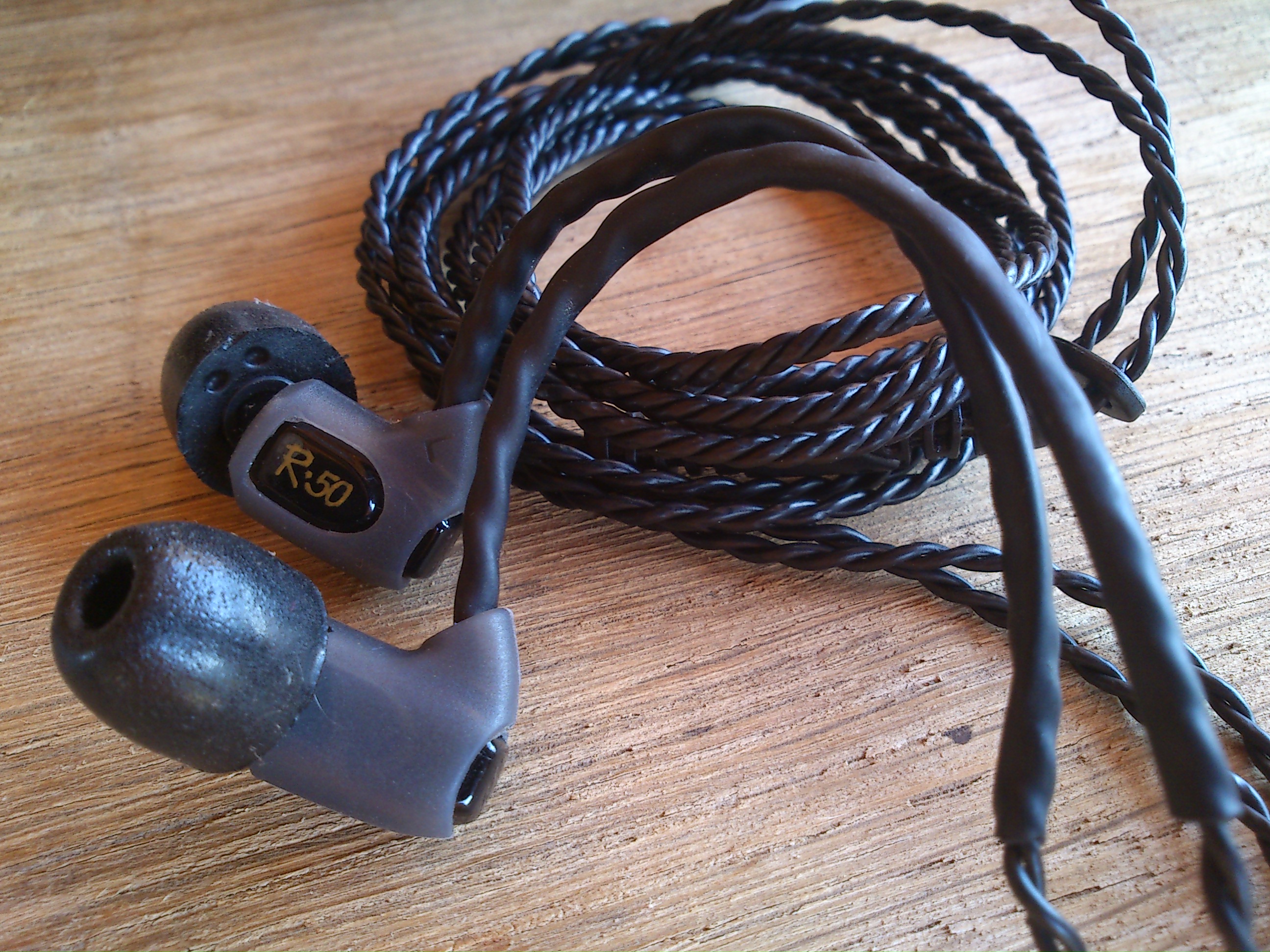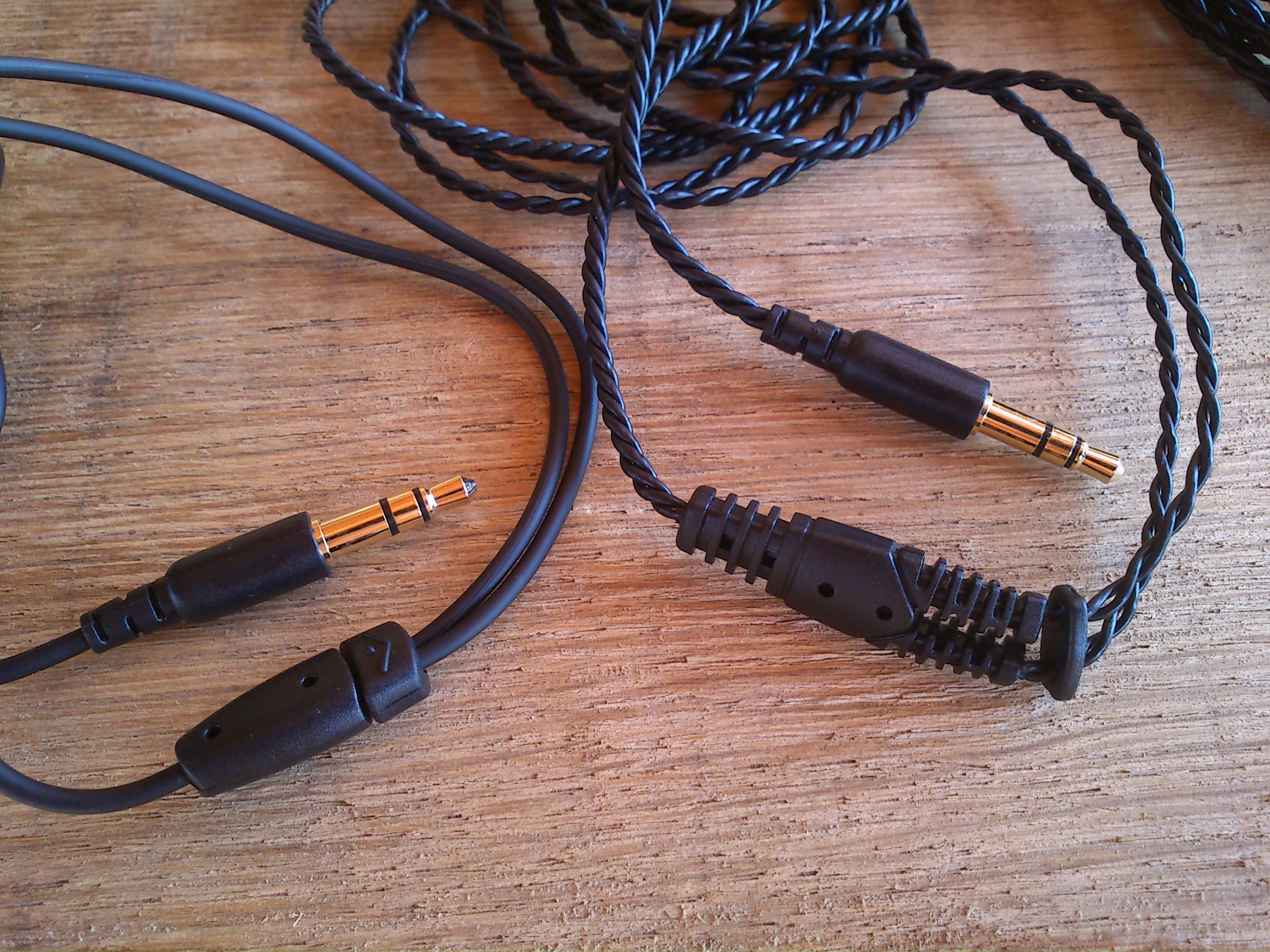I would like to thank Rockit sounds for kindly supplying me with a sample of each of their IEM’s. I will try and write as honest a review as possible. I will not write a huge review for each, just a short description for each so it’s easier to read and understand.
This is a subjective review, all opinions expressed are my own, others may not agree.
Gear Used:
IPod Classic 7G 160 GB > Rockit sounds
IPod Classic 7G 160 GB > Fiio L3 (DIY) > JDS Labs C421 (AD8620) > Rockit sounds
First off the Dynamic drivers, each received over 50 hours of burn in, not much changed apart from them clearing up a little:
Specs:
R-10/R-11 (same spec)
Transducers: Dynamic 10mm Nd FeB Rare earth magnet (don’t have a clue what this is)
Impedance: 16 ohms
Sensitivity: 105db
Frequency Response: 20-20,000
Packaging:
All Rockit sounds models have the same packaging except for the stickers with specs and model number, it is a nice matte black box, small in size with a window so you can see the IEM’s and Rock It written in orange on the front, with a magnet closed flap that opens to see the IEM and Accessories, specs and included accessories are listed on the back. This box opens and inside is a simple plastic tray holding the IEM’s and tips, underneath is the carry case with flight adapter inside. A simple but effective packaging, very easy to open and get to the IEM’s inside, but not as luxurious as Dunu’s packaging.
Accessories:
R-10 – Flight adapter, Hard clamshell case, S and L single flange tips (M installed on the IEM), that’s it, nothing special or extra, but everything essential. I would have liked to see a wider array of tips as I had to use some Hisound tips to get a good seal (small sony hybrid type tips).
R-11 – Flight adapter, Hard clamshell case, S and L single flange tips (M installed on the IEM) and S and L ergonomic silicone gels that fit on to the body of the IEM to make them more comfy (M installed already), again lack of array of tips made me use Hisound tips (small sony hybrid type tips).
top: R-10, R-11
R-10 – Plastic housing feels quite cheap, covered in silicone to make them more comfy, the nozzle is a very strange oval shape, but standard tips fit fine (sony hybrids…), this model differs from the rest as it has a normal cable and not a twisted one, but it still feels strong with good strain relief on both ends. The jack is I shaped, I would have preferred L shaped. Not bad build quality, and for the price it is good.
R-11 – Plastic housing is coated in a matte rubbery finish, and it has ergonomic gels that fit onto behind the tips, so they sit more comfy in your ears, the cable is the same as on the MEElectronics A151, and has good strain relief on the y-split and jack, which is again I shaped. The cable could be a bit thicker as it is a bit thin. Not bad again, it feels slightly better than the R10.
Fit, Isolation, Microphonics and Driver flex:
Fit on both is good, with the cable going over the ear and the right tips they are very comfy with a fairly shallow insertion but they don’t fall out.
R-10:
Full sounding IEM with big bass that hits hard but can become a little boomy and is not very well controlled, very fun to listen to, extension is good reaching sub-bass easily. The bass does bleed into the lower mids, warming up the whole spectrum taking some of the details away and making the mids slightly veiled. The mids are veiled and slightly recessed, but not terribly so. Vocals still cut through the mix and guitars are still easily heard, but they lack power and sound too warm to be realistic. Highs are not very present in the mix, being rolled off and lacking power and presence, along with sparkle and detail.
Soundstage is very average as well as instrument separation as they have a thick sound, becoming congested on faster tracks.
A great sound for working out, but not for casual listening as they have too much bass which overpowers the rest. A very non fatiguing sound signature with no sibilance or harshness and very forgiving of bad recordings.
Great for the average consumer, or active person.
R-11:
Very similar to the R-10, so I’m guessing they use the same driver, but the main differences are that the bass has a bit more mid-bass punch, but with the same amount of extension, the mids aren’t quite as veiled, having a bit better tone to them with more detail and air. The highs are also a little bit more present, which is a good thing as you can actually hear the cymbal crashes now, but they still lack detail and sparkle and have a metallic shine to them.
Soundstage is again average but instrument separation is a bit better as the mids are not as veiled, still becoming congested in fast music.
Again a full sound, great for sports, and also acceptable for everyday use, non-fatiguing with no sibilance again, I think these are good for the price.
Now the Balanced Armatures:
Specs:
R-20:
Driver: Micro Balanced Armature (I’m thinking Knowles Siren series)
Impedance: 31 ohms at 500Hz
Sensitivity: 109 dB
Frequency Response: 20 – 18,000 Hz
R-30:
Driver: Micro Balanced Armature
Impedance: 29 ohms at 1000Hz
Sensitivity: 114 dB
Frequency Response: 20 – 18,000 Hz
R-50:
Driver: Dual Micro Balanced Armature (TWFK driver unit)
Impedance: 31 ohms at 1000Hz
Sensitivity: 110 dB
Frequency Response: 20 – 20,000 Hz
Accessories:
All of them have the same Accessories, so i will list them here:
1x Hard shell clam case
1x Flight adapter
3x Silicone tips (S, M + L)
That’s it, again lack of tips made me use M Shure olive foam tips for comfort and isolation, all of them have the narrow type nozzle, which works well with Shure olives.
The R-30 also comes with the ergonomic silicone gels that cover the plastic body of the IEM to make them more comfy.
Build Quality:
R-20 – All plastic housing, small in size but in a strange shape and angle, which doesn’t help with the fit. The cable is the same twisted style like on the R-11 and R-30 + R-50 which feels strong and strain relief is very good.
R-30 – Plastic housing with a silicone covering feels well protected but the plastic does look a bit cheap, and the housing is quite large. The cable is the same twisted one, but in white and black this time.
R-50 – Tiny is one word for these, the housing is black plastic with a silicone cover to help with comfort and protection. The cable is the same twisted one, but with memory wire at the top to help keep them behind your ear, I like this, but the memory wire on the Shure SE425 is better.
Fit, Isolation and Comfort:
R-20 – Now the housing of these is a bit weird as the shape and angle of the housing is different to standard over the ear IEM’s, so it takes a while getting used to inserting and taking them out, but once you’ve got the hang of it they are very comfy. They have a medium depth insertion, and isolation is very good, as they are a fully sealed unit.
R-30 – Now these are quite big in size, and orange in colour so not very discreet, but once inserted they are very comfy, I think the silicone casing helps a lot, and these can have a fairly deep insertion. Isolation again is good, but not the best, but more than enough for most people’s needs.
R-50 – Now these have a tiny housing, which means you can find the perfect depth for your liking, I like them deeply inserted, and they isolate very well, better than the other 2 balanced armature models, but still not as good as Etymotics. The silicone surrounding the housing does make them more comfy, and the memory wire is also good for comfort.
Sound
R-20:
Bass is surprisingly punchy for a BA with good extension that does roll of in the sub-bass region, very well controlled and fast, mids are slightly forward with good detail and a slightly dry presentation, the bass does not bleed into the mids, nor does it veil them. The highs again are good, being further back in the mix, sounding very relaxed and easy to listen to without sounding boring. A Bit more presence and sparkle in the highs would be better, but these do have a full bodied sound, they never sound thin or harsh. No sibilance could be detected.
Soundstage is average in depth and height, but width is actually quite good, instrument separation is very good.
I think these are the SoundMAGIC PL50’s rival, as they are both around the same price, but I still prefer the PL50 over these, only because of the fit, comfort, and also the air between the instruments on the PL50 is a nice welcome, but the R-20 does sound more full bodied and is really a very good IEM for the price.
R-30:
Bass is more realistic with better extension than the R-20, very precise and detailed. Mids are forward again, but a lot more natural sounding, with a hint of lushness to them. Very good mids with amazing detail retrieval. The highs are also more present with more sparkle but still lacking a little detail and extension. A smoother more natural sound than the R-20, these based on sound alone are very good.
Soundstage has good height and width but not depth, and instrument separation is also very good.
If only they had designed these a little more discreet, and smaller, then these would have been killers, and I still highly recommend these for the price based on sound alone.
R-50:
Bass that hits hard and fast when needed, and extends fairly low but doesn’t really rumble as such and decays too fast. No bleed into the mids, which are crystal clear and the most transparent I have heard, better than the Etymotic HF5, but still doesn’t match the Shure SE425 in terms of naturalness. The mids are packed full of detail, and just present everything very well, but they don’t sound quite natural, some sibilance can be detected but nothing severe. The highs are very good in presentation and extension, with sparkle and details easily heard and very realistic cymbal crashes.
Soundstage is above average in width and height, and instrument separation is excellent as they present some air between everything.
These are the most balanced sounding of the bunch, and the TWFK driver is very good, very transparent and detailed, but doesn’t have the most natural of presentations, so everything sounds crystal clear, but lacking timbre and reverberation of real instruments.
Conclusion:
I would say that Rockit Sounds are bringing out some bargains, and the R-50 has become quite popular in the sub $150 region, I still don’t think they are as good as some people are saying, but I do think they stand their ground very well under $200 and are a steal for the price.
I hope you enjoyed this review, any comments and questions are welcome.
R-10 cable vs All other models










The R-50 is as good and or better than what most people say about them, some like them as much or more than the CK10 which has been the top TWFK IEM for a few years.